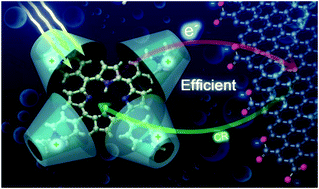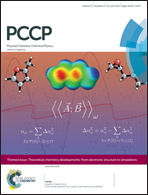To what extent can charge localization influence electron injection efficiency at graphene–porphyrin interfaces?†
Abstract
Controlling the electron transfer process at donor–acceptor interfaces is a research direction that has not yet seen much progress. Here, with careful control of the charge localization on the porphyrin macrocycle using β-cyclodextrin as an external cage, we are able to improve the electron injection efficiency from cationic porphyrin to graphene carboxylate by 120%. The detailed reaction mechanism is also discussed.


 Please wait while we load your content...
Please wait while we load your content...